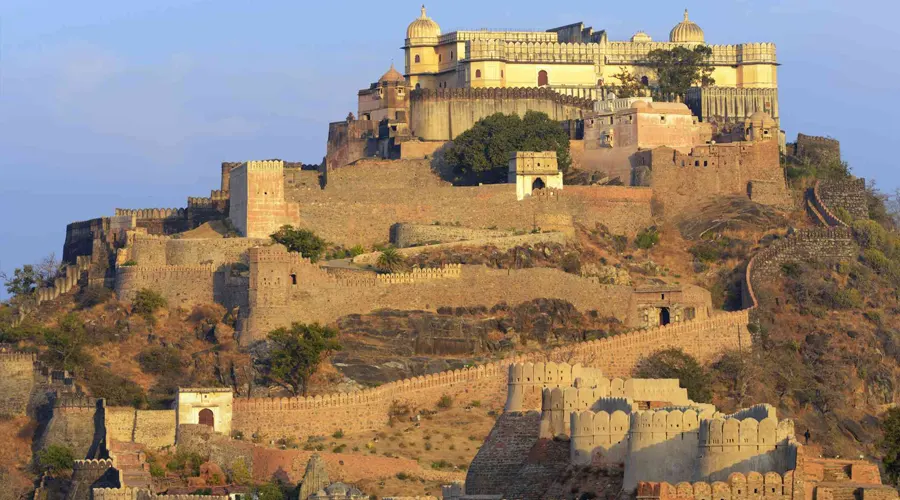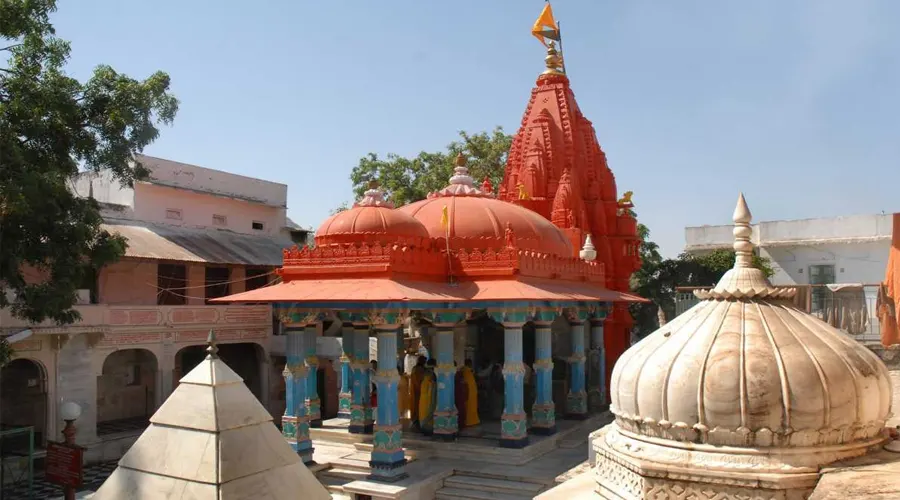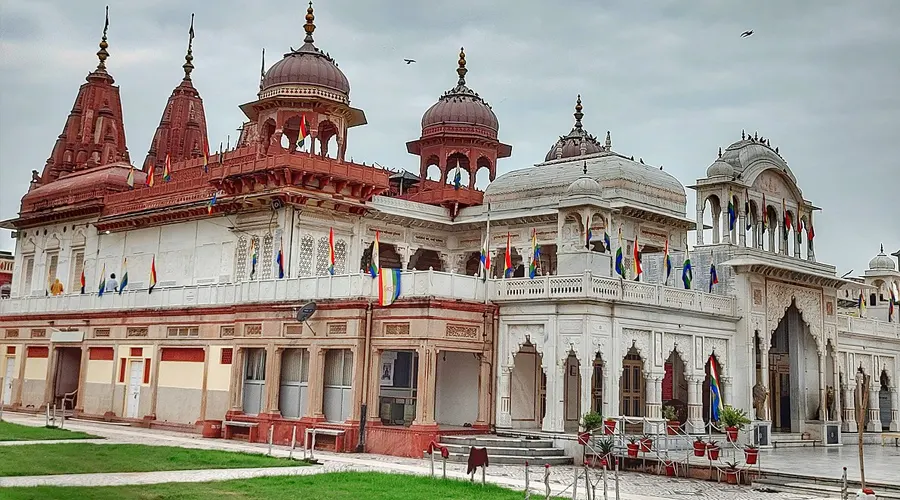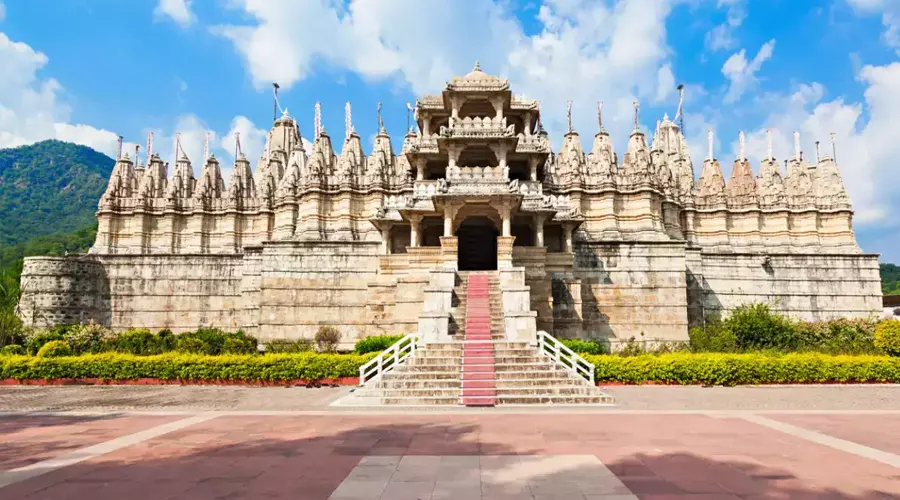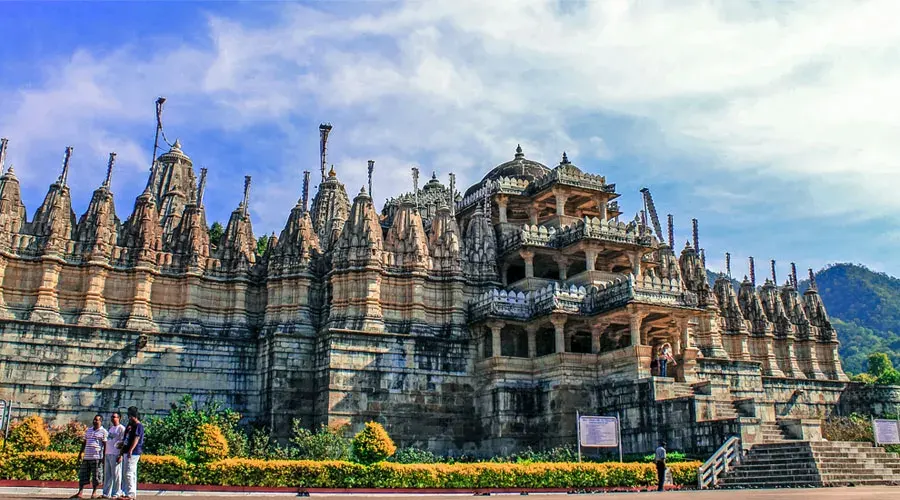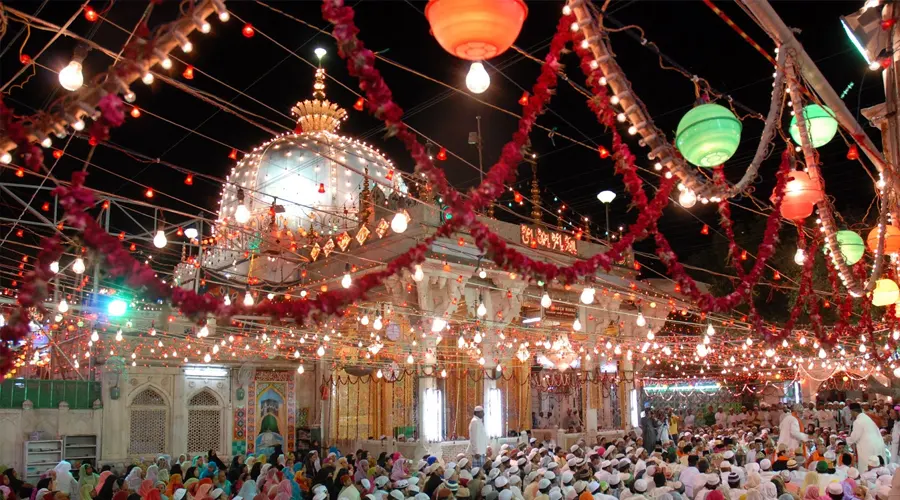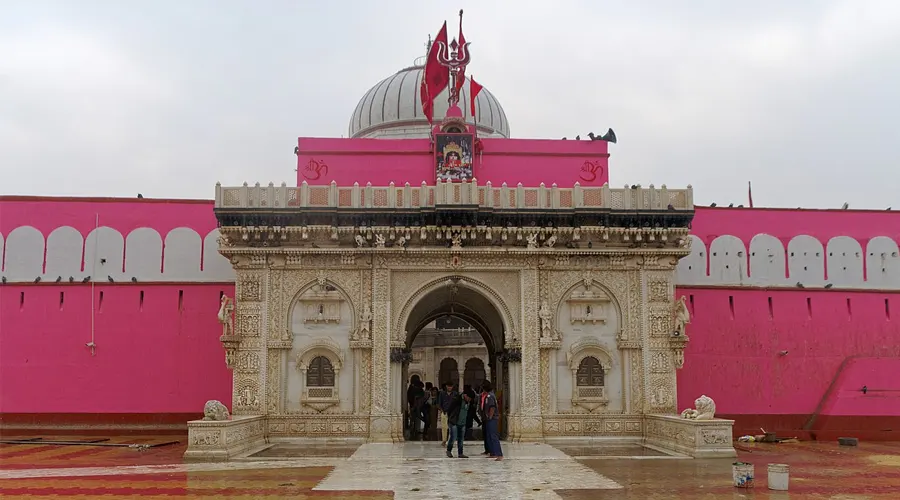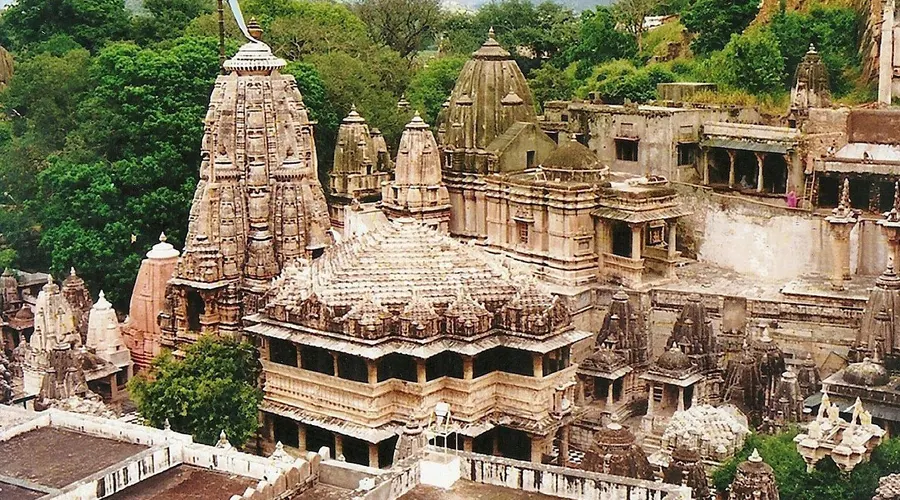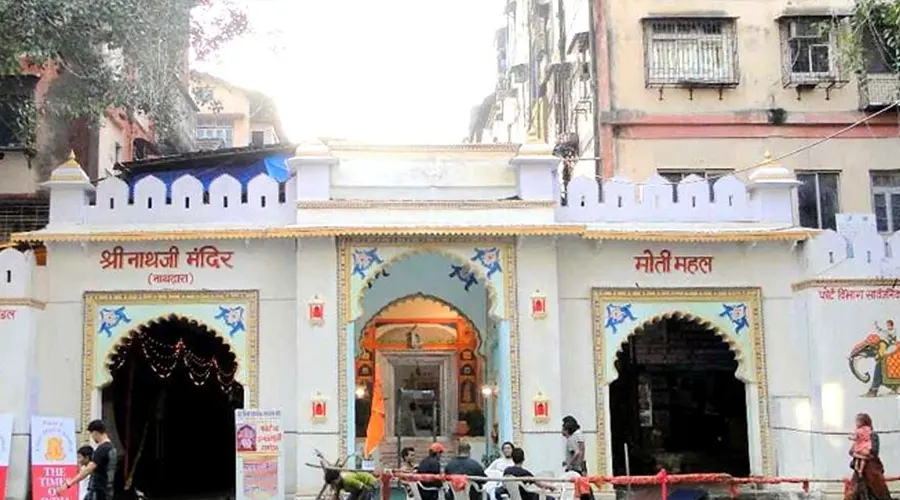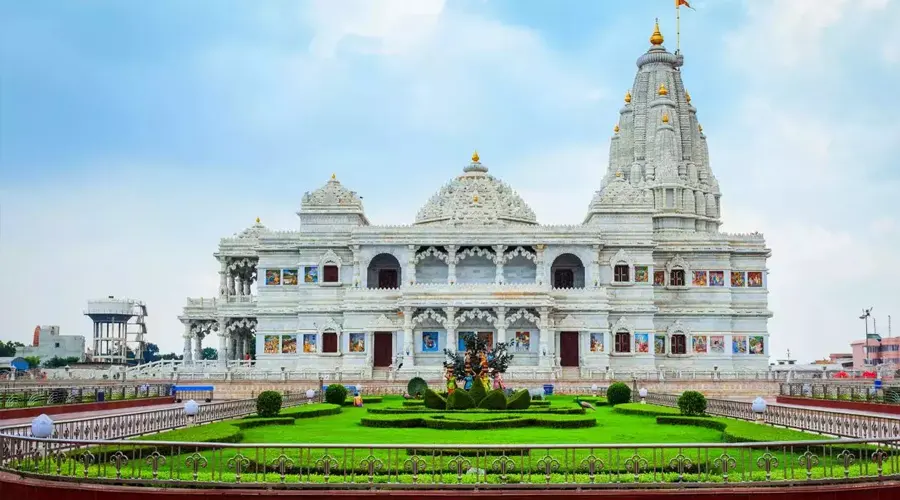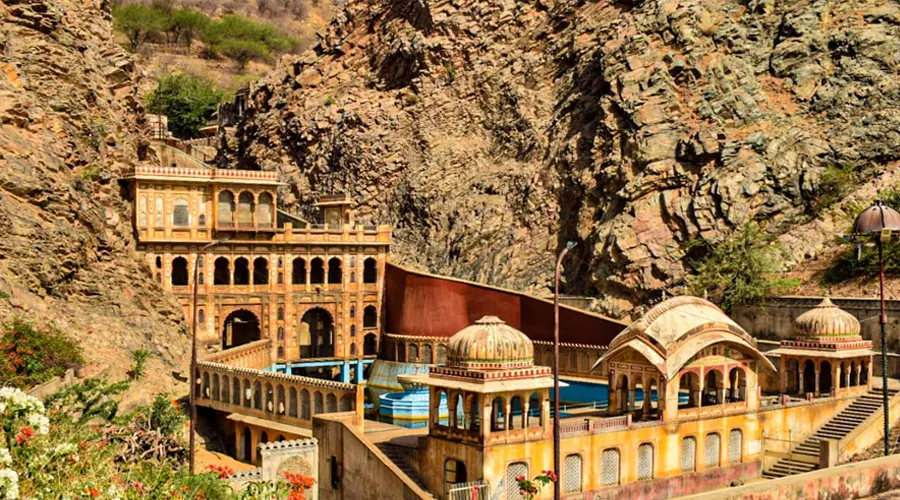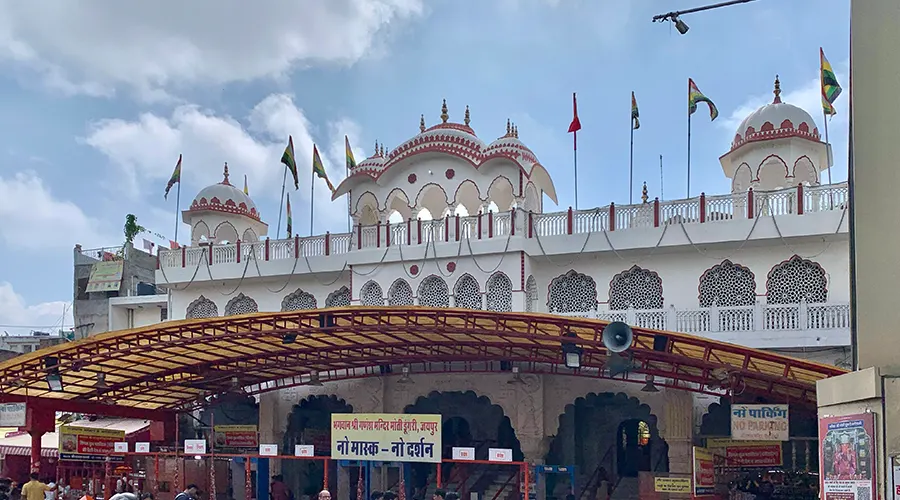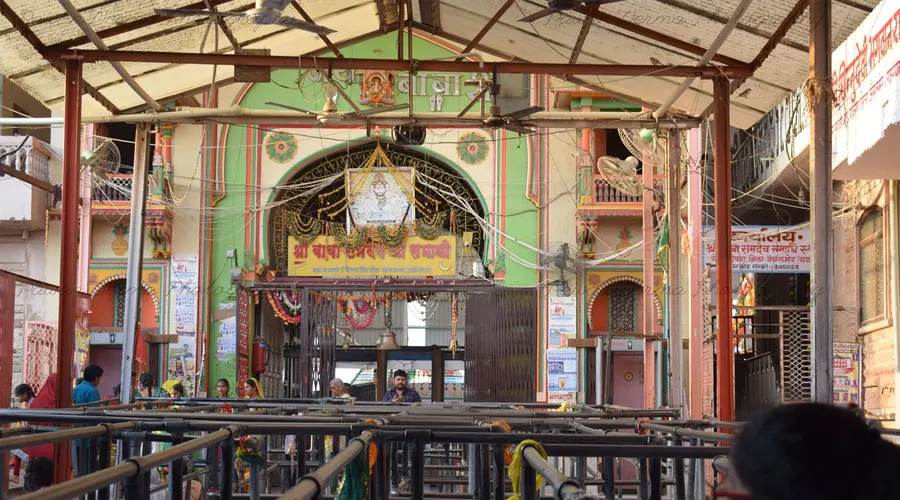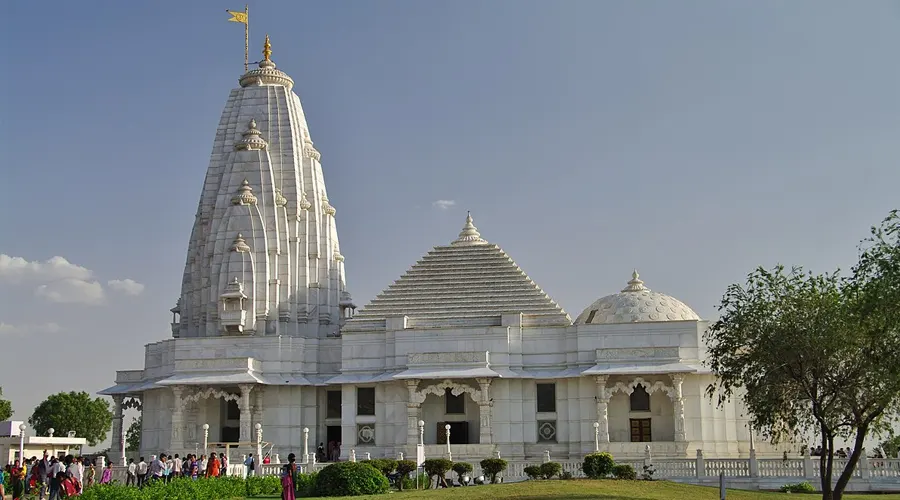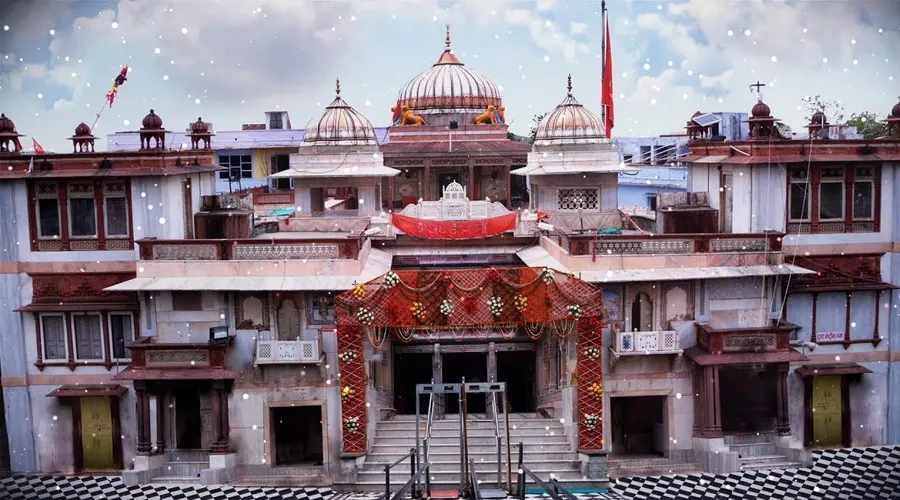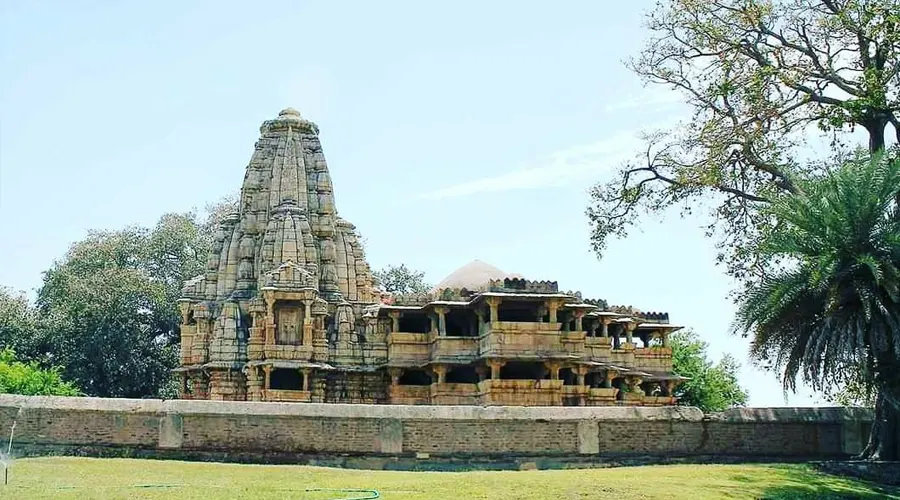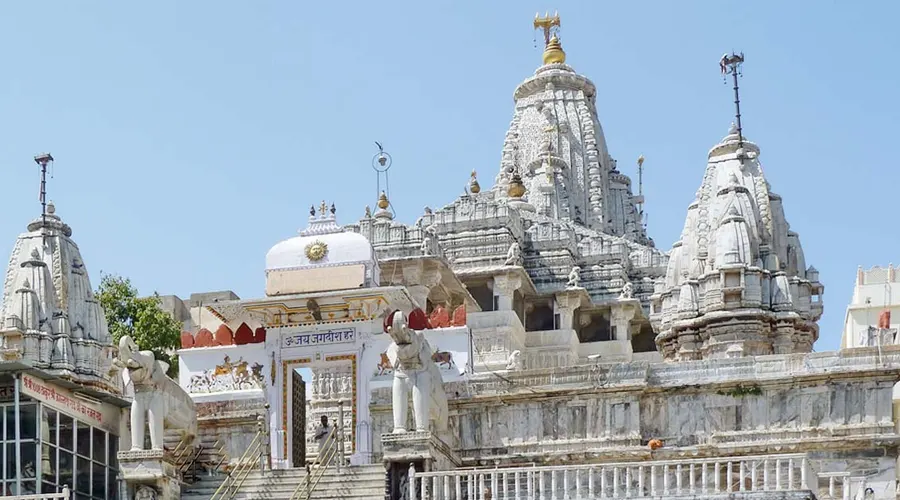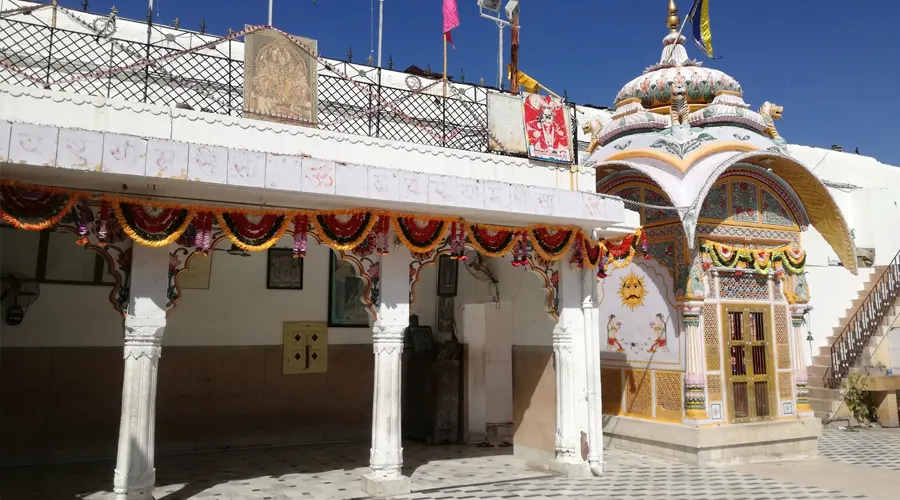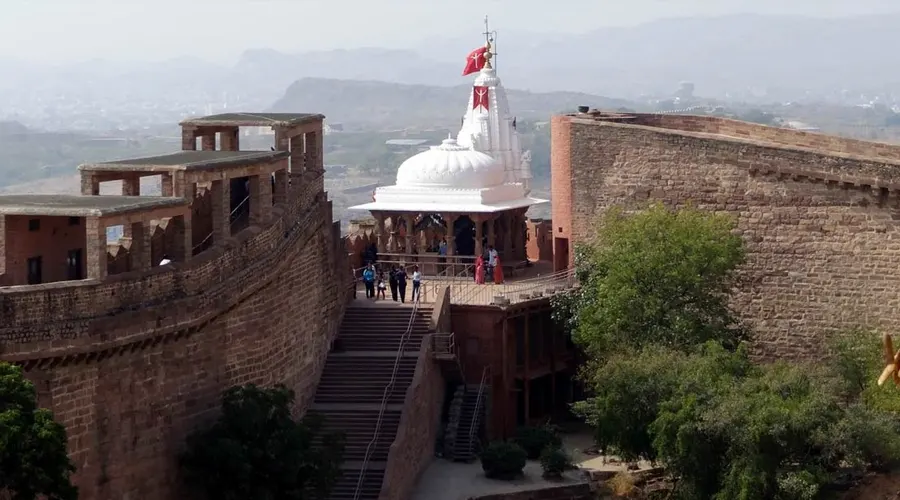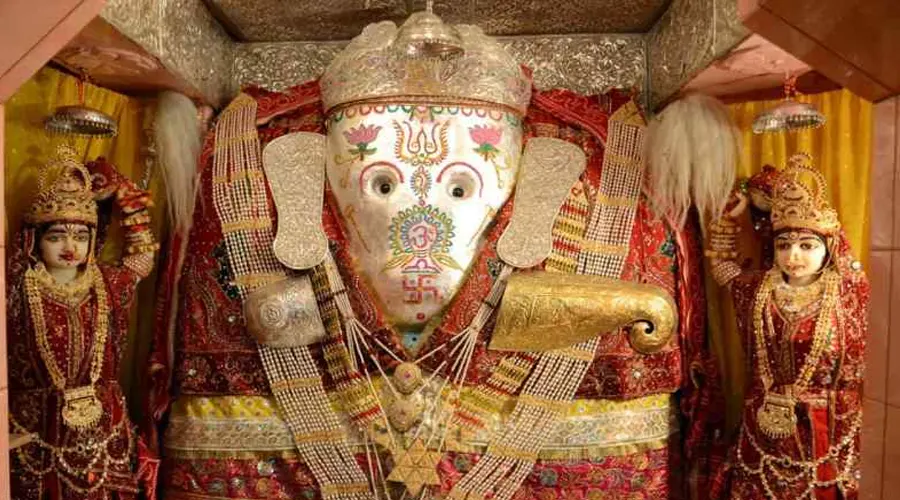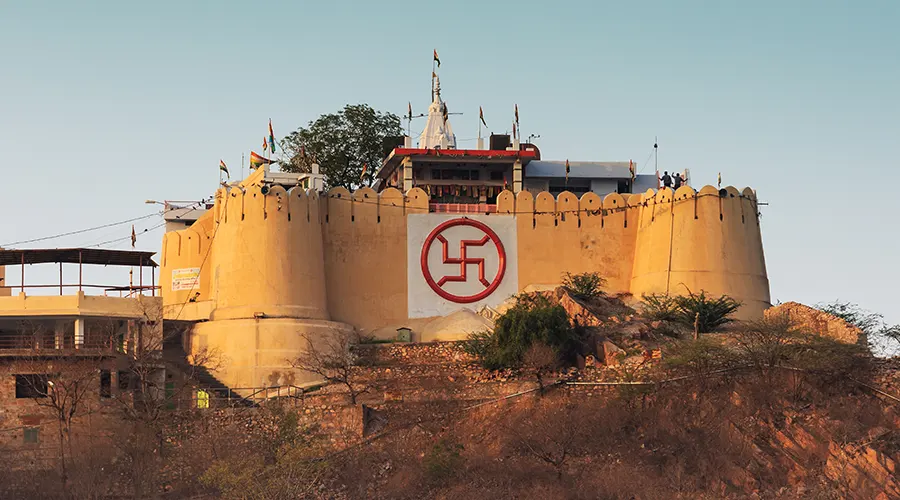Kumbhalgarh Fort
Kumbhalgarh Fort is one of the five hill forts of Rajasthan that were declared a UNESCO World Heritage site in 2013. Situated in the Rajsamand district of Rajasthan, around 82 kilometers from Udaipur, Kumbhalgarh Fort has the second largest wall (38km) after the Great Wall of China.
Constructed on the foothills of the Aravalli ranges, it is surrounded by thirteen hill peaks of the ranges and is perched at an elevation of 1,914 m. The magnificent fort is situated in the middle of a forest which has been turned into a wildlife sanctuary. It is the second-largest and the most important Mewar fort of Rajasthan after Chittorgarh palace.
Under the reign of Mewar kings in Rajasthan, the majestic fort was built by Rana Kumbha in the 15th century between AD 1443 and 1458 under the direction of Mandan who was a very renowned architect of that time. The fort was constructed in the same place where an old castle existed which was attributed to Samprati who was a Jaina prince of the second century BC. Named after King Kumbha, the Kumbhalgarh fort was cleverly designed on a hilltop to provide a strategic position to the Mewar kings to protect them against the attacks of the enemy.
The fort is also the birthplace of Maharana Pratap, one of the most powerful kings of Mewar. Also, the Badal Mahal was constructed inside the fort by Rana Fateh Singh, who was one of the most famous builders of the time. Badal Mahal, Kumbha Palace, Jain Temples, Boris, Chhatris, water reservoirs, and Brahmanical are some of the main buildings inside the spectacular fort.
History of Kumbhalgarh Fort
The foundation of the Junagarh fort was laid by Rao Bika in 1478. Earlier it was just a stone fort. The present Junagarh fort was built to protect the stone fort built by Bika. The city of Bikaner was established in 1472 and grew up around the mighty fortress.
There were many attempts to capture it by foreign enemies. However, all except one failed. Kamran Mirza, the son of Babur, captured the striking fort just for one day in 1534 during the rule of Rao Jait Singh.
The city of Bikaner flourished under the rule of its sixth ruler Raja Rai Singh who ruled from 1571-1611. Raja Rai Singh accepted the Mughal rule and held a high position under the rule of Akbar and Jehangir. His victories in various wars won him many accolades and jagirs. After gaining a position under the Mughal rule, Raja Rai Singh started building the Junagarh fort.
The foundation ceremony of this impressive fortress was held on 17 February 1589, and the work was completed on 17th January 1594. Raja Rai Singh, who was an artistic person and had knowledge of architecture, designed the fort to be a grand structure amidst the Thar Desert.
Architecture of Kumbhalgarh Fort
The Junagarh Fort is the epitome of architectural excellence. The architecture is a mix of various cultures, the earliest being the Rajput style. The earliest smear of design is that of the traditional Rajput style influenced by the alliance of the Gujarati association with the Mughals. Next, the architecture reflected semi-western influence, and lastly, the revivalist Rajput structures were built mainly during the rule of Maharaja Ganga Singh.
The Junagarh Fort has a rectangular layout with a length of about 1078 yards. It encloses an area of 63119 square yards. The fort was initially built as a safeguard to the old stone fort built by Rao Bika. It used to have a moat earlier for security purposes, but it is now non-existent.
The magnificent fortress encloses many palaces with exquisite designs. All the balconies, gates, kiosks, and other structures have been influenced by the heritage and culture of the ruler who built them.
One of the main features of Junagarh Fort is the stone carvings done in red and gold sandstone. All the structures are made of red sandstone. The interiors are decorated in ancient Rajasthani style. The palatial fort has seven gates with many palaces as well as Hindu and Jain temples. It also has two main gates made of Golden sandstones.
Earlier the Karan Pol was used for entry while the Suraj Pol is used now. The Karan pol is east-facing which allows the first rays of the sun to fall on it. The golden rays on the yellow sandstone are a beautiful vision and are also considered a good omen.
The lavish structures of this fort and the exquisite beauty of each structure stand witness to the regal lifestyle that had been led here centuries ago. The Junagarh Fort is called "a paradox between medieval military architecture and beautiful interior decoration.

